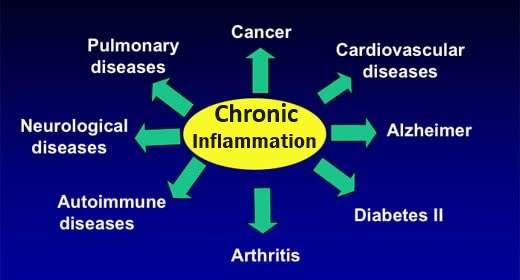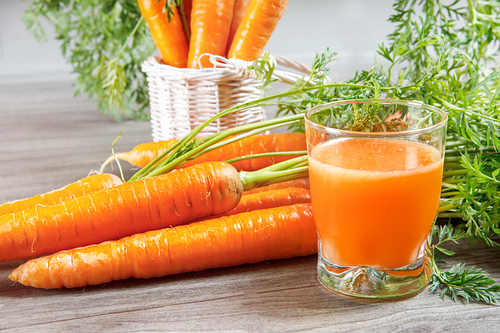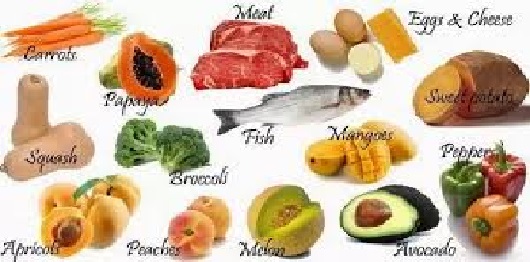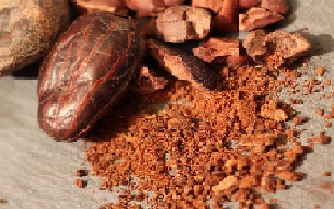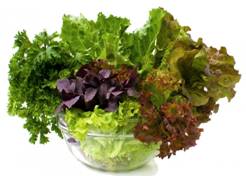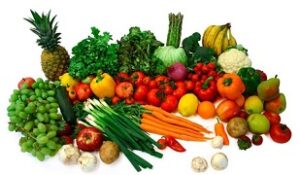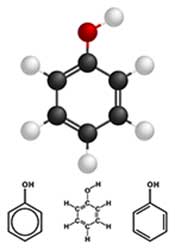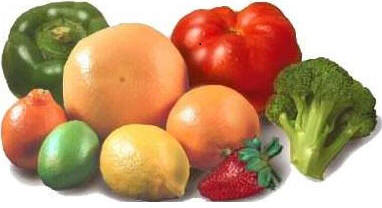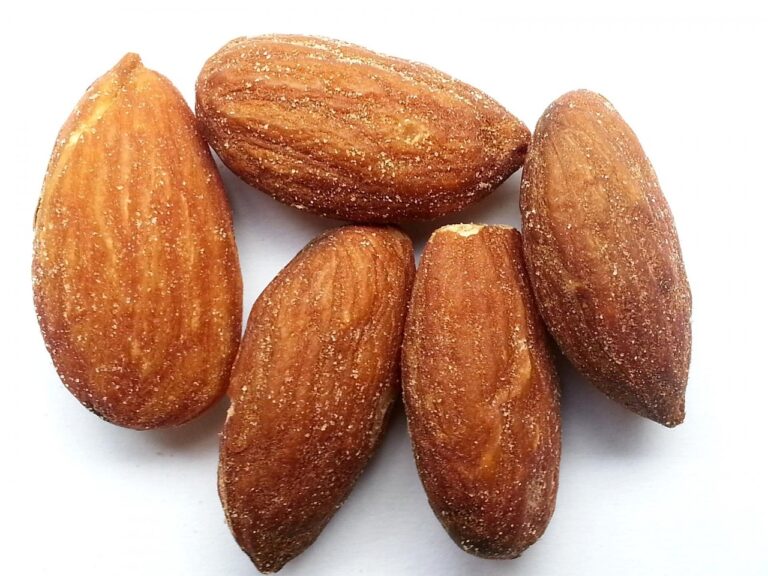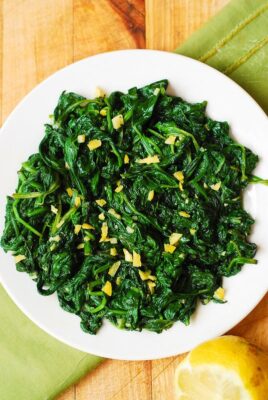CoQ10 -"Spark and dampener"


Vitamin-like CoQ10 performs 2 roles vital to our well-being
(1) A “Spark” In its essential role in the production of cellular energy. CoQ10 is a relatively large, worm-shaped quinone molecule, called UBIQUINONE because it was found to be ubiquitous (i.e. everywhere)in the body. It was discovered by Fred Crane, Phd. in 1957 in his quest to find the “Missing link” in the mitochondrial energy-producing process.
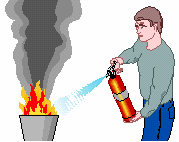
(2) A “Dampener” as a powerful antioxidant in the mitochondria (cells’ energy production factories) and cell membranes. CoQ10 is the only fat-soluble antioxidant synthesized by the body, but production diminishes significantly with age. For some, CoQ10 levels within the heart and kidneys have dropped more than 25% by age 40.
There are two forms of CoQ10:
(1) Ubiquinone – The OXIDIZED form of CoQ10
- Ubiquinone is converted to ubiquinol. Whether produced in the body, obtained from wholesome, unprocessed foods or supplemented, the body must then convert ubiquinone to ubiquinol.
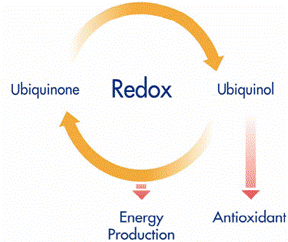
(2) Ubiquinol – The REDUCED/ACTIVE form of CoQ10
- In order to have electrons to donate to free radicals, antioxidants must be in their reduced form. Ubiquinol (reduced form) is also present in certain foods.
- The body’s ability to convert ubiquinone (oxidized form of CoQ10) into the necessary active ubiquinol (reduced form of CoQ10) decreases with age and/or with oxidative stress. Under the age of 25, the body is quite capable of converting CoQ10 from its oxidized form to its reduced form;
They look different too. If you were to break open capsules of the two supplement forms, you would see that ubiquinone (the oxidized form of CoQ10) is a bright yellow crystallized powder, and that the ubiquinol (active form) is a much paler whitish yellow.

What does CoQ10 do in your body?
“The Spark”
CoQ10 is the fundamental ingredient for energy production in every cell
- CoQ10 IGNITES the spark for energy production in the cell mitochondria (the energy production “factories”inside our cells). CoQ10 shuttles electrons (extracted from food) back and forth between enzymes in the cell mitochondria in the process of making ATP molecules (the cells energy “currency”).
- Without adequate amounts of CoQ10, the heart does not have enough energy to pump the blood efficiently. The heart has the highest concentration of CoQ10. It has been reported that death can occur if the CoQ10 level in the heart decreases below 75% of normal.
In more detail: CoQ10 is a crucial component of the electron transport chain (respiratory chain) in the mitochondria where energy derived by a process called oxidative phosphorylation from the products of fatty acid, protein and carbohydrate metabolism is converted into biological energy called adenosine triphosphate (ATP) that drives cellular machinery and all biosynthetic processes. CoQ10 functions as an essential cofactor for the activities of the enzyme systems called complexes I, II and III in the electron transport chain. It shuttles electrons from complex I (nicotinamide adenine dinucleotide dehydrogenase) and Complex II (succinate dehydrogenase) to complex III (ubiquinone-cytochrome c reductase) by virtue of its redox (reduction-oxidation) properties. It is during this process of electron transfer along the electron transport chain that vital biological energy as ATP is generated.
“The Dampener”
CoQ10 is one of the “Super Antioxidants”
- Of hundreds of antioxidants, there is a select group of networking antioxidants that are particularly effective at slowing the aging process and boosting the body’s ability to fight disease:
- CoQ10, Glutathione and Lipoic Acid –can be made by the body, but levels decrease with age, and their deficiency is responsible for most premature deaths.
- Vitamin C and Vitamin E. Must be obtained from food or supplements, since we can not make them.
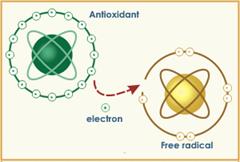
- CoQ10 “snuffs out” damaging free radicals produced in the mitochondrial energy-producing process and other systems in the body, and also from sources outside the body. As such, this fat-soluble antioxidant helps protect vital structures from free radical damage.
- Most important is COQ10’s antioxidant protection inside the mitochondria. CoQ10 is a broad spectrum AO protecting not just arteries, but also brain, liver, muscles, nerves and other systems.
- CoQ10 is a primary AO protector of LDL cholesterol. CoQ10 prevents cholesterol from becoming oxidized, a cause of arterial plaque build-up leading to arterial blockage.
- CoQ10 helps maintain membrane stability
- CoQ10 regenerates Vitamin C and E. CoQ10 also partners with vitamin C to keep vitamin E under control, preventing it from becoming unstable.
General health functions of CoQ10
CoQ10 sports an impressive resumé
- Boosts energy/stamina. Provides the “spark” for your body’s cells to produce energy; Can improve athletic performance;
- Powerful Fat-soluble Antioxidant. Most diseases involve inflammation as a consequence of oxidative damage; the active form of CoQ10 (called ubiquinol) prevents an inflammatory reaction by protecting against free radical damage in fats (e.g. cholesterol, polyunsaturated oils) or fatty areas (E.g. all cell membranes are composed of fatty acids, the brain is 2/3 fat, the protective myelin sheath covering communicating neurons is 70% fat). Cardiovascular diseasesand wrinkled skin resulting fromUV oxidation are well-known examples of oxidative stress, but also, oxidation in the brain is implicated in neurodegenerative diseases, such as Parkinson’s, ALS, M.S., Huntington’s, Alzheimer’s and cerebral palsy.
- Supports cardiovascular health. Promotes healthy circulation, efficient cardiac function, protects LDL cholesterol from oxidation (the forerunner to atherosclerosis) and helps maintain normal blood pressure; a healthy blood supply also supports brain function.
- Reduces signs of aging. You feel more alert, responsive and energetic. Antioxidant ability prevents and reduces wrinkles in the skin;
- Supports immune and nervous systems. Your brain is very active and requires a constant energy supply. CoQ10 provides immune system with a vital free radical defense E.g. in allergies;
- Supports body’s ability to control blood sugar
- Anti-mutagenic. Preliminary studies show CoQ10 to be anti-mutagenic (cancer cells develop through mutagenesis)
- Protects the liver when using certain medications.
CoQ10 activates genes in nuclear DNA to turn back the cellular clock
- According to Australian Anthony Linnane’s latest research. CoQ10 sends a chemical messenger to the nucleus to “switch on” certain strategic genes and fortify already degraded cellular systems (e.g. from the aging process).
Weakened cells regain strength helping those with conditions from cancer to chronic fatigue to heart disease.
- CoQ10 Makes Muscles Younger. Linnane tested muscle tissue from patients supplementing 300mg daily CoQ10 for 1 month compared to those taking placebo. He found that the CoQ10 group muscle produced a dramatic change toward a more youthful profile. The muscle fiber change meant that CoQ10 had modulated hundreds of genes relevant to muscle biochemistry.

How is CoQ10 distributed in the tissues?
CoQ10 is present in all tissues in our body
In Blood
- It is associated with lipoproteins
- In circulation, 90% of CoQ10 is present in its reduced form(as ubiquinol). The ratio of oxidized to the reduced form in blood may serve as a measure of in vivo oxidative stress. Yamashita S, Yamamoto Y. Simultaneous detection of ubiquinol and ubiquinone in human plasma as a marker of oxidative stress. Anal Biochem. 1997
- Recent studies have shown that the level of circulating ubiquinol (CoQ10-H2) tends to decline in certain disease conditions. E.g. diabetes, liver disease, down syndrome, etc. with the result that the ratio of circulating Ubiquinol to total CoQ10 goes down. LIM S.C., et al., 2006; Hasegawa, et al.2005; Yamamoto Y, et al., 1999
Concentrations vary from tissue to tissue, but CoQ10 is more concentrated in areas with high rates of metabolic activity and high energy demands
In the heart +++
- The heart has the highest CoQ10 concentration. Followed by the liver, kidneys, spleen and pancreas
- The oxidized vs. reduced forms of CoQ10 (i.e. ubiquinone vs. ubiquinol) also varies from tissue to tissue. Those with high aerobic activity generally contain higher amounts of ubiquinone (the oxidized form);
- Heart muscle is packed with mitochondria (~¼ the volume of heart cells). Heart expands/contracts 100,000 times/day requiring lots of energy and therefore needs lots of CoQ10.

Every cell makes CoQ10, so why are many deficient in it?
Age
It is believed that as many as 75% of men and women over age 50 are deficient in CoQ10
- The body’s natural ability to produce CoQ10 decreases by up to 80% with age. Starting around 25 years and accelerating after 40;
- As we age the body is less able to convert CoQ10 to its active form (ubiquinol).
The average diet supplies only a small amount of CoQ10 and is also deficient in its cofactor vitamins
Only small amounts of CoQ10 can be extracted from food. The best sources are organ meats (heart, kidney, liver – i.e. tissues with high energy demands); other good sources are meat, fish/shellfish (especially mackerel, salmon, sardines), peanuts, soybean, palm, olive, corn, sunflower and peanut oils, broccoli and spinach. However, a typical diet does not provide enough to maintain optimal CoQ10 levels. E.g. You would have to eat 1# of sardines, 2# of beef, or 2 ½# of peanuts to obtain the equivalent of a 30mg supplement, about enough to maintain health, but nowhere enough for therapeutic benefit against disease. Weber C et al. The coenzyme Q10 content of the average Danish diet. Int J Vitam Nutr Res. 1997
It takes certain nutrients to make CoQ10. Deficiency in these essential components can adversely affect the production of adequate amounts of CoQ10:
- Amino acid TYROSINE (Non-essential)
- Tyrosine is found in many high protein food products. E.g. soy products, chicken, turkey, fish, peanuts, almonds, avocados, bananas, milk, cheese, yogurt, cottage cheese, lima beans, pumpkin seeds, and sesame seeds.
- Tyrosine can also be synthesized in the body from phenylalanine (rich food sources of this essential amino acid are curds, milk, cottage cheese, pulses and legumes, poultry, piyal seeds (Indian), peanuts, pistachios, almonds, leafy vegetables, and whole grains).
- At least seven vitamins – B2, B3, B6, folic acid, B12, C, pantothenic acid and certain trace minerals, such as selenium. In particular, dietary B6 (pyridoxine) is notably low in the elderly and those eating a refined / processed food diet.
Emotional Stress
- Emotional stress depletes body’s CoQ10. Emotional stress increasing oxidative stress in the body, which creates oxidants (E.g. free radicals). The body’s CoQ10 supply is depleted when used to neutralize these oxidants.
Cholesterol lowering drugs
- Cholesterol lowering drugs greatly reduce the body’s ability to produce CoQ10. This is because the metabolic pathway that produces cholesterol also produces CoQ10.
Anyone taking statin drugs should be taking supplementary CoQ10.
Beta-Blockers
- Beta-Blockers decrease endogenous serum CoQ10 levels. By inhibiting CoQ10-dependent enzymes. Fuke C et al, 2000
Overactive Thyroid
- Overactive Thyroid depletes CoQ10. By increasing thyroid hormone, metabolism is accelerated, which depletes the CoQ10 supply. Symptoms of hyperthyroidism include anxiety, bulging eyes, irregular/fast heart rhythm, irritability, muscle weakness, and weight loss. The heart is usually the first casualty.
Extreme physical exertion
- Although moderate exercise stimulates the body’s production of CoQ10, exhaustive, prolonged exercise depletes CoQ10 by using it up as fuel to support increased activity. Those at risk are weekend warriors and performance athletes.

Potential health benefits of CoQ10
Adequate CoQ10 maintains good health and prevents / reduces the risk for numerous chronic degenerative and metabolic diseases
Supported by a large body of data, the following health problems are associated with CoQ10 deficiency, where CoQ10 supplementation has been found to be beneficial:
Cardiovascular disease (CVD)
- CoQ10 has an important role as an antioxidant in maintaining cardiovascular health by protecting LDL from oxidation. Mohr D et al, 1992; Alleva R et al, 1997
- Congestive heart failure / Heart failure (heart unable to pump /distrubute enough blood to body). Substantial evidence supports the therapeutic role of CoQ10 supplementation in heart failure by increasing cellular energy production. Soja AM, Mortensen SA, 1997
- Cardiomyopathy
- Angina pectoris
- Arrhythmias
- Mitral valve prolapse
- Hypertension. COQ10 may be all that is needed in mild cases. 46 male and 37 female hypertensive patients (mean age ~70) received 120mg/day CoQ10 in a study by the Department of Veterans Affairs Medical Center in Boise, Idaho. Systolic blood pressure was reduced by an average of 17.8 mmHg. Burke et al, 2001. Similar results were obtained by Australian researchers with a daily dose of 200 mg CoQ10 in 74 hypertensive diabetics. Hodgson JM et al, 2002
- Atherosclerosis
- Cardiotoxicity (drug-induced)
- Other references related to CoQ10’s beneficial role in various conditions related to the heart and the cardiovascular system. Litarru GP, 1995; Sinatra ST, 1998; Overvad et al, 1999; Greenberg & Frishman, 1990; Langsjoen HA et al, 1994; Langsjoen PH, Langsjoen AM. , 1999.
Neurodegenerative Diseases
CoQ10 has a recognized beneficial role in any neurodegenerative disease characterized by impaired mitochondrial function and/or excessive oxidative damage. Beal MF., 2002; Beal MF.2003; Beal MF. 2004;
Brain cells that suffer continued oxidative stress will eventually die. Oxidative stress causes inflammation, and CoQ10 is a player in reducing the inflammatory marker C-Reactive Protein (CRP) in animals. Wang XL et al, 2004
High dose CoQ10 supplementation has been found protective against neuronal toxins in animal models, particularly in Parkinson’s and Huntington’s diseases, and also ALS. Also, note that sufficient CoQ10 supports a healthy blood flow from the heart, which provides needed nutrients for the brain.
- Huntington’s Disease. Beal MF, 2001; Ferrante RJ et al, 2002
- Parkinson’s Disease. Recent clinical trials in these disorders demonstrate that supplemental CoQ10 can slow functional decline. In a large, multi-center study, 80 subjects with early Parkinsons were administered CoQ10 doses of 300, 600 or 1200 mg per day and followed for 16 months. Those who received CoQ10 experienced less disability than those who received the placebo, and the benefit was greatest in those who received the highest dosage. These results were confirmed by scientists in Germany giving 360mg doses for 4 weeks to 28 Parkinson’s patients. Shultz CW et al, 2002; Shultz CW,2003.
- Alzheimer’s Disease
Neuromuscular Diseases
- Amyotrophic lateral sclerosis (ALS / Lou Gehrigs Disease)
- Multiple Sclerosis
- Muscular dystrophy
Skin Health
- Including melanoma and topical cosmetic use. Hojerova J, , 2000; Rusciani L et al, 2006; Hoppe U et al, 2002
Diabetes
- CoQ10 supplementation has been reported to reduce insulin requirements in diabetes mellitus – Australian researchers reported a reduction of HbA1c (an indicator of blood sugar control) in a large group of hypertensive diabetics who received a daily CoQ10 dosage of 200 mg per day. Hodgson JM, 2002
- Healthy individuals have more than a 90% ubiquinol ratio in their plasma, whereas individuals with Type 2 Diabetes have as little as 25% – This decrease correlates to lower energy levels.
Blood Glucose(mmol/l) | <=5.5 (n=60) | 5.6 -6.9 (n=63) | >=7.0 (n=69) |
Ubiquinol Ratio (%) Male | 93±6 | 43±25 | 24±11 |
Lim, S. C., et al. Abstract of 2005 American Diabetes Association
Cancer
- Two dramatic case studies published in 1994 confirm CoQ10’s role in reducing/removing cancer tumors
- A 59-year-old woman who had intraductal carcinoma (cancer) of the left breast, which resolved completely on a daily dose of 390 mg CoQ10
- A second patient, after breast surgery, was found to have residual intraductal carcinoma in the tumor bed – She refused additional surgery, and was placed on 300 mg CoQ10 per day. Over a year later, there was no evidence of residual tumor or metastases. Despite practicing oncology for 35 years, over which he had treated about 200 cases of breast cancer per year, one of the authors commented that he had never seen such a spontaneous complete regression of a 1.5-2.0 cm breast tumor on any conventional anti-tumor therapy. Lockwood K et al, 1994
- A more recent study indicated that breast cancer is associated with a decrease of plasma CoQ10 levels – and the worse the cancer, the greater the decrease in CoQ10. Joliet P et al, 1998
Renal failure
- COQ10 improves renal function. Dr. Ram B. Singh of the Heart Research Laboratory and Center for Nutrition in Moradabad, India, reported on a new indication for CoQ10 therapy, in a patient with acute glomerulonephritis, renal failure and high levels of lipid peroxides. He administered 180 mg per day of CoQ10, with a resultant lowering of lipid peroxides and significant improvement in renal function. Singh RB and Singh MM, 1999 In a follow-up study of 11 patients with chronic renal failure (serum creatinine levels were 5 mg/dL or above) who were on intermittent dialysis, Dr. Singh again administered CoQ10 at a dosage of 180 mg per day. After 4 weeks of treatment, the patients experienced significant reductions in serum creatinine and blood urea and significant increases in creatinine clearance and urine output, and fewer subjects required dialysis. Singh, R.B. et al, 2000
Periodontal disease
- CoQ10 is dramatically effective in treating periodontal disease – a common malady of aging. In an early study 8 patients received CoQ10 at 25 mg. twice a day, versus a placebo group. Results showed a reduction in pocket depth with photographic evidence of improved gingival health. Wilkinson, E.G. et al, 1976. In a more recent study, CoQ10 was used topically with significant improvement. Hanioka T et al, 1994
Other health problems helped by CoQ10
- Chronic fatigue syndrome
- Chronic obstructive pulmonary disease (COPD)
- Asthma
- Migraine
- Immune Disorders
- Male Infertility
- HIV/AIDS
- Mitochondrial Cytopathies(E.g. MELAS, MERRF, etc)
- MELAS, MERRF, etc.
- Ataxias

Supplementing with CoQ10
CoQ10 supplementation is beneficial for the over 40’s and those of any age with depleted CoQ10 levels
There is no RDA or DV for CoQ10 – Since it is produced in all body cells, CoQ10 is not considered essential. However, like some other nutrients (e.g. taurine, carnitine and choline), it could be called “conditionally essential” because its endogenous production may not be able to keep up with the body’s demand. In such situations supplemental CoQ10 is indicated.
- Both the production of CoQ10 and its conversion to ubiquinol begin to decline more rapidly around our 40’s and 50’s;
- CoQ10 provides a boost for those of any age with substantially lower CoQ10 levels. Many are deficient in it.
- You can boost your own body’s CoQ10 production with B6 supplementation. 100 mg Vitamin B6 / day.
Always supplement CoQ10 when taking statins
Replenishes CoQ10 depleted when taking a cholesterol-lowering statin drug or beta-blockers
Ubiquinol (not ubiquinone) is the best form of supplemental CoQ10
- Ubquinol is the already converted, active form of CoQ10. To obtain benefit from CoQ10 for production of cellular energy and reduction of signs of aging, your body must first convert ubiquinone (the educed storage form of CoQ10) to its active form ubiquinol. By the age of 40 the body has become much less efficient at converting ubiquinone to ubiquinol, and so it is better to directly supplement with ubiquinol.
- Ubiquinol remains in your blood stream much longer than ubiquinone. Ernster and Dallner, 1995
- The bioavailability of ubiquinol has been shown to be higher than that of ubiquinone in both animal and human studies. Miles MV et al, Bioequivalence of coenzyme Q10 from over the counter supplements. Nutr Res 2002; Zaghloul A-a et al. Bioavailability assessment of oral coenzyme Q10 formulations in dogs. Drug develop Ind Pharm 2002.
- In a recent trial with human subjects, the superior bioavailability profile of ubiquinol was clearly demonstrated. Hosoe et al, 2007
- The plasma of a healthy human has more than 90% of CoQ10 as ubiquinol
After a decade of research and development, “Kaneka Nutrients” recently created the first stabilized, bio-identical supplemental form of Ubiquinol (called Kaneka QH™). Through a biological process that ferments natural CoQ10. Ubiquinol achieves higher elevations of circulating CoQ10 in the bloodstream with a much smaller dose than when using a ubiquinone CoQ10 supplement.
- No adverse effects in studies. Kaneka Q10 has been tested in dozens of safety studies up to clinical doses of 3,000 mgs per day, showing no adverse effects.
Daily dose of ubiquinol
Serious health conditions require greater CoQ10 doses. Accumulating research indicates that the higher the dosage the greater the benefit and that the only limiting factor on the CoQ10 dosage is the cost, which is not cheap.
- Healthy person 20-30. Shouldn’t need to supplement CoQ10 at all, unless they are particularly active or have a condition causing lowered CoQ10 levels – in which case, they can take ubiquinone, since their body can convert it efficiently to ubiquinol;
- Healthy person 30-40. 50mg
- Healthy person in 40’s and 50’s (To prevent heart attack). 100mg
- 60’s and older / Tired / Taking a statin drug. 100-200mg
- Very sick. Typically 200-300 mg split into 2 or 3 doses; Some examples of amounts used in studies: 390 mg dose used in breast cancer study, 1200 mg dose in Parkinsons disease;
Works better when taken with a meal. Even better if the meal contains fat in which to dissolve the CoQ10, and so provide better absorption.
How is the status of CoQ10 assessed?
In humans, plasma or serum CoQ10 concentrations will serve as a good indicator of status. The best way to assay CoQ10 by HPLC (high pressure liquid chromatography) by UV or electrochemical detection.
- Plasma CoQ10 may not always reflect tissue status. Localized deficiencies of CoQ10 may exist such as in the skeletal muscle or myocardial tissue whilst plasma concentrations may show “normal” values. If biopsy material is available, tissue CoQ10 analysis can yield more useful information. Steele et al, 2004
How are the body’s CoQ10 levels affected by CoQ10 supplementation?
Normal serum / plasma CoQ10 concentrations. In healthy people, usually range from 0.5 – 1.0 µg per mL. Total body CoQ10 is estimated at 1.5-2g.
After oral CoQ10 supplementation. Plasma / serum concentrations reach a maximum after ~6 hours. The time to deplete to half-maximum concentration is ~34 hours. Shults et al, 2004
The Kaneka Dosing Study of Kaneka QH ™
The study measured total CoQ10 concentration in human plasma for various dosage levels: Total plasma COQ10 concentration results were as follows: Placebo (n=19), 90mg/day (n=20), 150mg/day (n=20), 300mg/day (n=19)
- Began around 0.5 μg/ml for all participants and increased in a dose dependent manner;
- Reached over 7 μg/ml at a dose of 300mg/day (~2.5 μg/ml at 90mg dose and ~3.5μg/ml at 150 mg dose)
- Reached a plateau after about 2 weeks intake for all doses
- Returned to base levels ~12 days after supplementation was stopped
CoQ10 in skin care
Mix ubiquinol into cream/lotion at 0.5% concentration. After first dissolving it in a small amount of oil for a smooth texture to your finished product.

References
http://kenayag.com.pl/dok/Kan.pdf
Alleva R et al, Oxidation of LDL and their subfractions: kinetic aspects and CoQ10 content. Molecular Aspects of Medicine, 1997.
Beal, M.F. CoQ10 as a possible treatment for neurodegenerative diseases. Free Radic Res 2002; Kieburtz K (The Huntington Study group), A randomized, placebo-controlled trial of coenzyme Q10 and remacemide in Huntington’s disease. Neurology 2001;
Beal MF. Coenzyme Q10 as a possible treatment for neurodegenerative diseases. Free Rad Res 2002, 36:455-460;
Beal MF, Shults CW. Effects of Coenzyme Q10 in Huntington’s disease and early Parkinson’s disease. Biofactors. 2003;18:153-6.
Burke BE et al, Randomized, double-blind, placebo-controlled trial of CoQ10 in isolated systolic hypertension. S Med J Nov. 2001.
Ferrante RJ et al,Therapeutic effects of coenzyme Q10 and remacemide in transgenic mouse models of Huntington’s disease. J Neurosci 2002
Ernster L, Dallner G. Biochemical, physiological and medical aspects of ubiquinone function. Biochem Biophys Acta, 1995.
Fuke C et al, Coenzyme Q10: A review of essential functions and clinical trials. US Pharmacist 2000.
Greenberg S, Frishman WH. Co-enzyme Q10: a new drug for cardiovascular disease. J Clin Pharmacol 1990;
Hasegawa, et al. Daily profile of plasma % CoQ10 level, a biomarker of oxidative stress, in patients with diabetes manifesting post prandial hyperglycemia, Acta Diabetol, 2005;
Hanioka T et al, Effect of topical application of CoQ10 on adult periodontitis. Mol Aspects Med 1994;15(Suppl):s241-s248.
Hodgson, J.M et al, CoQ10 improves blood pressure and glycaemic control: a controlled trial in subjects with type 2 diabetes. Eur J Clin Nutr 2002.
Hojerova J, Coenzyme Q10—its importance, properties and use in nutrition and cosmetics. Ceska Slov Farm 2000;49(3):119-123;
Hoppe U et al, Coenzyme Q10, a cutaneous antioxidant and energizer. Biofactors. 1999;9(2-4):371-8; Passi S et al. Lipophilic antioxidants in human sebum and aging. Free Radic Res. April 2002;36(4):471-7
Hosoe K et al, Study on safety and bioavailability of ubiquinol (Kaneka QH™) after single and 4-week multiple oral administration to healthy volunteers. Regul Toxicol Pharmacol. 2007;47:19-28.
Jolliet, P. et al. Plasma CoQ10 concentrations in breast cancer: prognosis and therapeutic consequences. Int J Clin Pharmacol Ther 1998;36(9):506-509
Langsjoen HA et al, Usefulness of coenzyme Q10 in clinical cardiology: a long-term study. Mol Aspects Med 1994;
Langsjoen PH, Langsjoen AM. Overview of the use of coenzyme Q10 in cardiovascular disease. Biofactors 1999.
LIM S.C., et al. Oxidative burden in prediabetic and diabetic individuals: evidence from plasma coenzyme Q10, Diabetic Medicine 2006;
Littarru GP, Energy and Defense. C.E.S.I., Rome, 1995;
Lockwood K et al, Partial and complete regression of breast cancer in patients in relation to dosage of CoQ10. Biochem Biophys Res Comm 1994, 199: 3, 1504-1508
Mohr D et al, Dietary supplementation with coenzyme Q10 results in increased levels of ubiquinol-10 within circulating lipoproteins and increased resistance of human low-density lipoprotein to the initiation of lipid peroxidation. Biochim Biophys Acta 1992;
Overvad K et al, Coenzyme Q10 in health and disease. Eur J Clin Nutr 1999;
Rusciani L et al, Low plasma coenzyme Q10 levels as an independent prognostic factor for melanoma progression. J Am Acad Dermatol. Feb 2006;54(2):234-41;
Shultz C.W et al (Parkinson Study Group), Effects of CoQ10 in early Parkinson disease: evidence of slowing of the functional decline. Arch Neurol 2002 Oct.;59(10):1541-50;
Shults CW et al, Pilot trial of high dosages of coenzyme Q10 in patients with Parkinson’s disease. Exp Neurol. 2004;
Shultz C.W, CoQ10 in neurodegenerative diseases. Curr Med Chem 2003 Oct.;10(19):1917-2
Sinatra ST,The Coenzyme Q10 Phenomenon. Keats Publishing, New Canaan, CT, 1998; Pepping J. Coenyzme Q10. American Journal of Health-System Pharmacy 1999;
Singh, R.B. and Singh, M.M. Effects of CoQ10 in new indications with antioxidant vitamin deficiency. J Nutr Environ Med 1999; 9:223-228
Singh, R.B., Khanna, H.K., and Niaz M.A. Randomized, double-blind placebo-controlled trial of CoQ10 in chronic renal failure: Discovery of a new role. J Nutr Environ Med 2000; 10:281-288
Soja AM, Mortensen SA, Treatment of congestive heart failure with coenzyme Q10 illuminated by meta-analyses of clinical trials. Mol aspects Med 1997;
Steele PE et al, Clinical laboratory monitoring of coenzyme Q10 use in neurologic and muscular diseases. Am J Clin Pathol. 2004;121 Suppl:S113-20.
Wang XL et al, Stocker R. Cosupplementation with vitamin E and coenzyme Q10 reduces circulating markers of inflammation in baboons. Am J Clin Nutr. September 2004;80(3):649-55.
Wilkinson, E.G. et al, Bioenergetics in clinical medicine VI. Adjunctive treatment of periodontal disease with CoQ10. Res Comm Chem Pathol Pharmacol Aug. 1976; 14(4): 715-719.
Yamamoto Y, et al. Plasma Ubiquinone to Ubiquinol ratio in patients with hepatitis, cirrhosis, and hepatoma, and in patients treated with percutaneous transluminal coronary reperfusion, BioFactors, 1999












